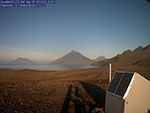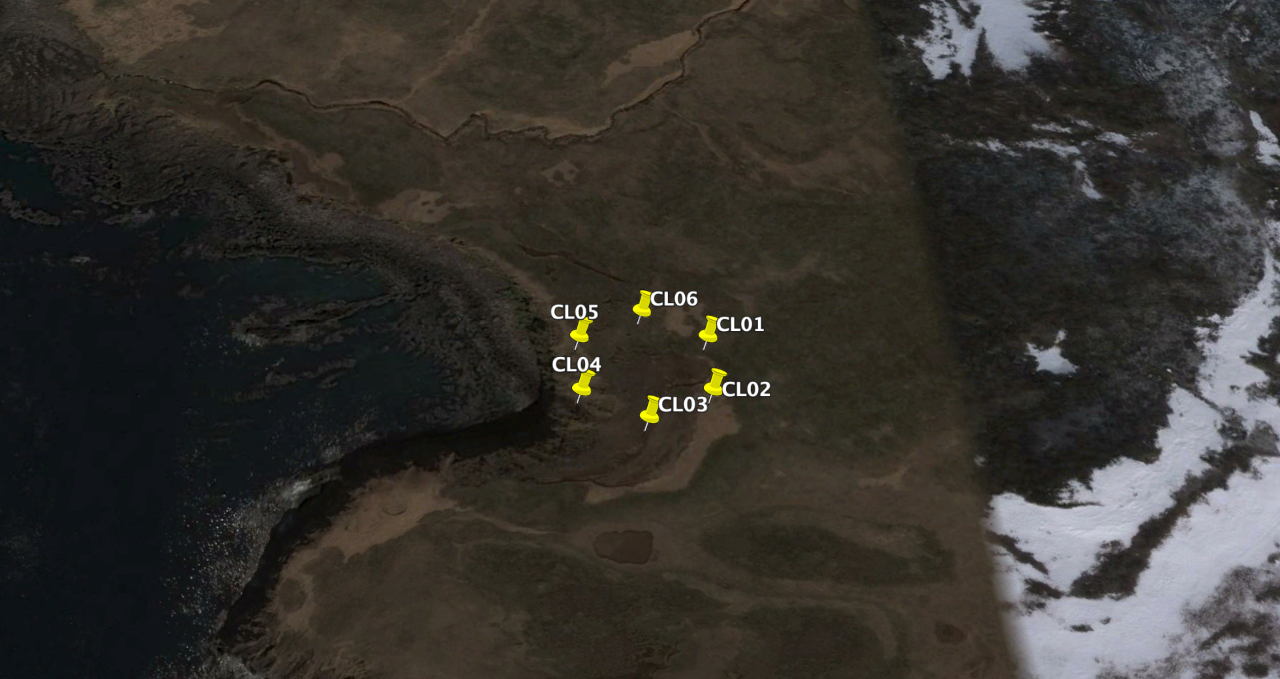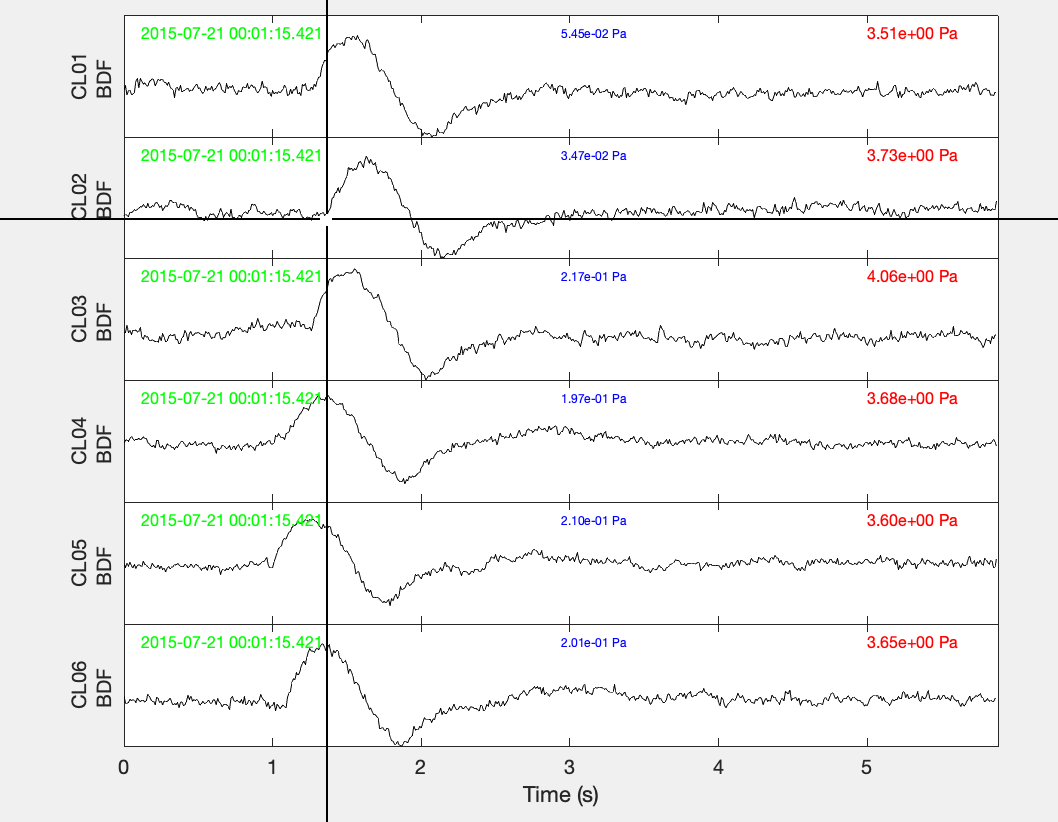Map position by triangulation
The team is dropped off by helicopter. After unloading they decide to locate their position. It is clear enough (remarkably!) to see three volcanic peaks in the distance. These are: (1) the symmetric and tall peak of Mt Cleveland, (2) the more distant and truncated peak of Herbert volcano to the left of Mt Cleveland, and the hazy peak of another volcano to the right (north) of Mt. Cleveland. This last volcano is called Carlisle volcano, or Mt. Carlisle, but it is not named on some maps.

Now look at the topographic map. Mount Cleveland and Herbert volcano are labeled. The third volcano island NW of Mount Cleveland is not named on the map. The contour interval on the map is 100 m, Mt. Cleveland rises from sealevel to 1730 m (approximately, its height changes with nearly every eruption).
Using the photograph and the map, guess the location of the helicopter drop zone. Consider the relative locations of the three volcanic peaks in the photo from the webcam at the drop zone and the positions of these three peaks on the map.
Your guess might be quite accurate, or you might be off! Improve your guess using bearings to triangulate your location. With a Brunton compass, team members "shoot" bearings from your location to three points. These three points are:
- Mt Cleveland summit: 287$^{\circ}$
- Herbert volcano east crater rim: 262$^{\circ}$
- Carlisle volcano summit (NW of Mt Cleveland, not labeled on map): 299$^{\circ}$
To triangulate the team's position, find the three points on the map. Use the azimuth tool to find the bearing from the point to the team's location. Hint: You will have to subtract 180$^{\circ}$ from the bearing measured from the team's location to the point. The bearing lines intersect at the team's location.
Drag the red circle to move the azimuth tool
Drag the blue circle to change the bearing
read the azimuth (the blue number)
Extra construction lines are OK. But if you make too many just start over by refreshing (reloading) the webpage.
Save the image by right-clicking on the image.

